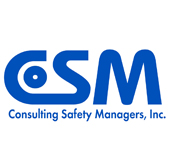Reversing Safety Complacency in a Work Team
We have seen a lot of safety management systems over the years as we support companies with SafeTask®. One of the most common problems that prevents a work team from reaching its safety goals is Safety Complacency. In this this article, we’ll share a valuable action plan that we applied for reversing Safety Complacency in a work team.
What is Safety Complacency?
A work team has Safety Complacency when its team members perceive their safety margins to be better than they really are. Some indicators are a low rate of safe behaviors, inflated perception survey data, short-cutting written safety practices, risk-taking work habits, and acting invulnerable.
Safety Complacency is worrisome because it can spread from person to person on a work team. And then it can spread from work team to work team, infecting an entire workforce.
When Safety Complacency spreads and the workforce has yet to experience the consequences of a bad incident, the safety culture can slide into the Normalization of Deviation. Diane Vaughn coined this concept in her excellent book, The Challenger Launch Decision. The Normalization of Deviation is a dangerous groupthink condition that tolerates widespread risk-taking as normal in an organization.
Dealing with Safety Complacency
When we see Safety Complacency, we like to help the operations team contain it first. Then we set out to convert the risk-taking into a high rate of safe behaviors. An operating unit can stomp out Safety Complacency with an intervention, or a good action plan that applies the SafeTask® methods.
In SafeTask®, we call this action plan Reset the Safety Margins. It’s what our team applies when reversing Safety Complacency in a work team. We’ll share an example of how it works.
An operations manager recognized the significance of a string of near misses. The incidents stemmed from a work team losing their safety margins during high-risk tasks.
We came in an observed this work team with 36-employees while they performed their high-risk tasks. We collected data about their safety margins. A baseline safety observation score was established of 31%. Then we confirmed the extent of the Safety Complacency by conducting interviews with the work team members about why the risk-taking was occurring.
Here is what we did to Reset the Safety Margins. We set a target of 40 safety contacts per employee per week. Then we developed an action plan to generate this frequency of safety contacts and to solve some safety issues.
- We analyzed the work team members’ safety skill sets and engaged them as active learners with SafeTask® to close their gaps.
- The risk of four key hazards was mitigated with better hazard controls.
- The work team prepared five Task Safety Analyses to standardize the safety margins for everyone performing the work tasks.
- Task training and drills reinforced the safety margins and taught the necessary safe behaviors.
- A habitual risk-taker was removed from the work team.
- Pre-Tasking was initiated to reinforce the safety margins before initiating high-risk tasks, a proven method for increasing safe behaviors.
- Supervisors applied Task Scans to give feedback about safety margins while the team members performed their tasks.
- Safety Observations gathered data about safety margins each week.
- The supervisors and safety coordinator conducted weekly safety meetings to review the performance data with the work team. The work team began focusing on its own hot spots.
- The operations manager introduced more structure into the daily shift routine that coincided with the safe behaviors.
The average safety observation score improved. Here are some milestones over eight weeks:
61% at the end of Week 3 (up from 31%).
82% at the end of Week 5.
94% by end of the Week 8.
The operations manager was able to Reset the Safety Margins for the work team and its tasks. Safety Complacency was eliminated. The action plan propelled the work team solidly into the SAFE MODE.
The intervention and better performance also affirmed the safety leadership of the operations manager. The operations manager reported major improvements of operating discipline, situation awareness, and good judgment about risk.
Safety Complacency can be reversed with an action plan. By applying what the operations manager learned in a SafeTask® System course, the work team was able to Reset the Safety Margins and achieve a high rate of safe behaviors.


